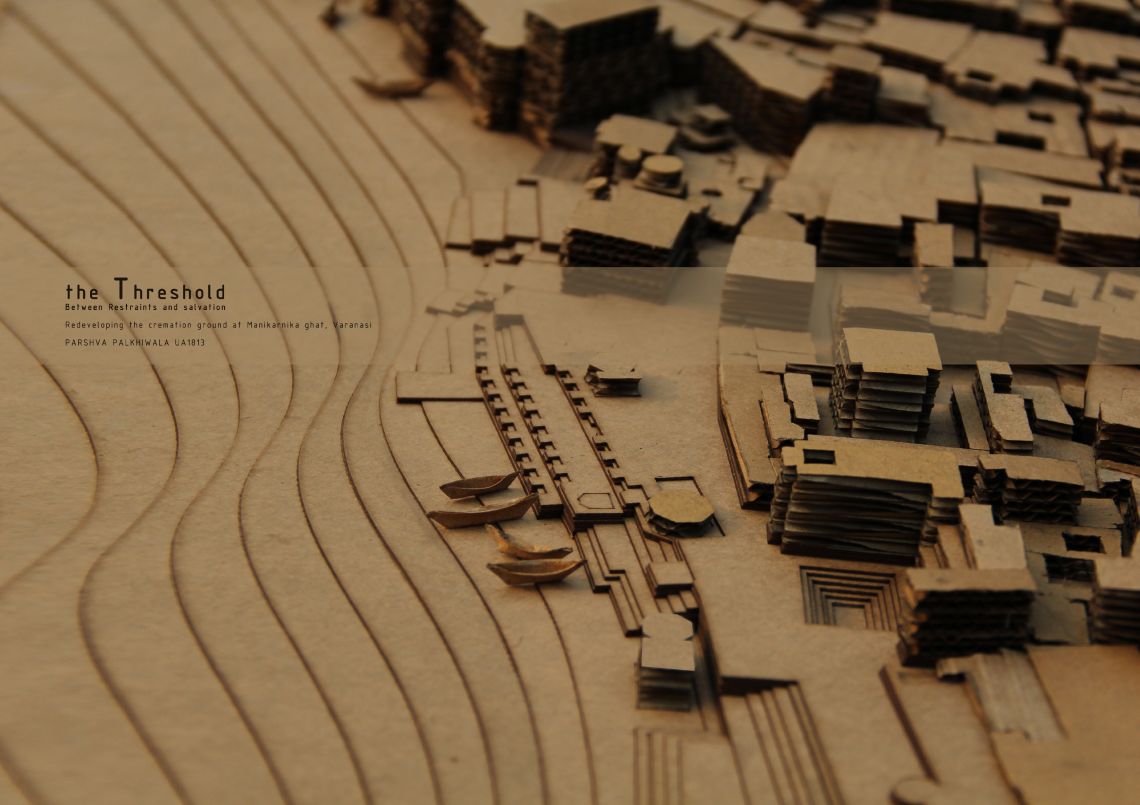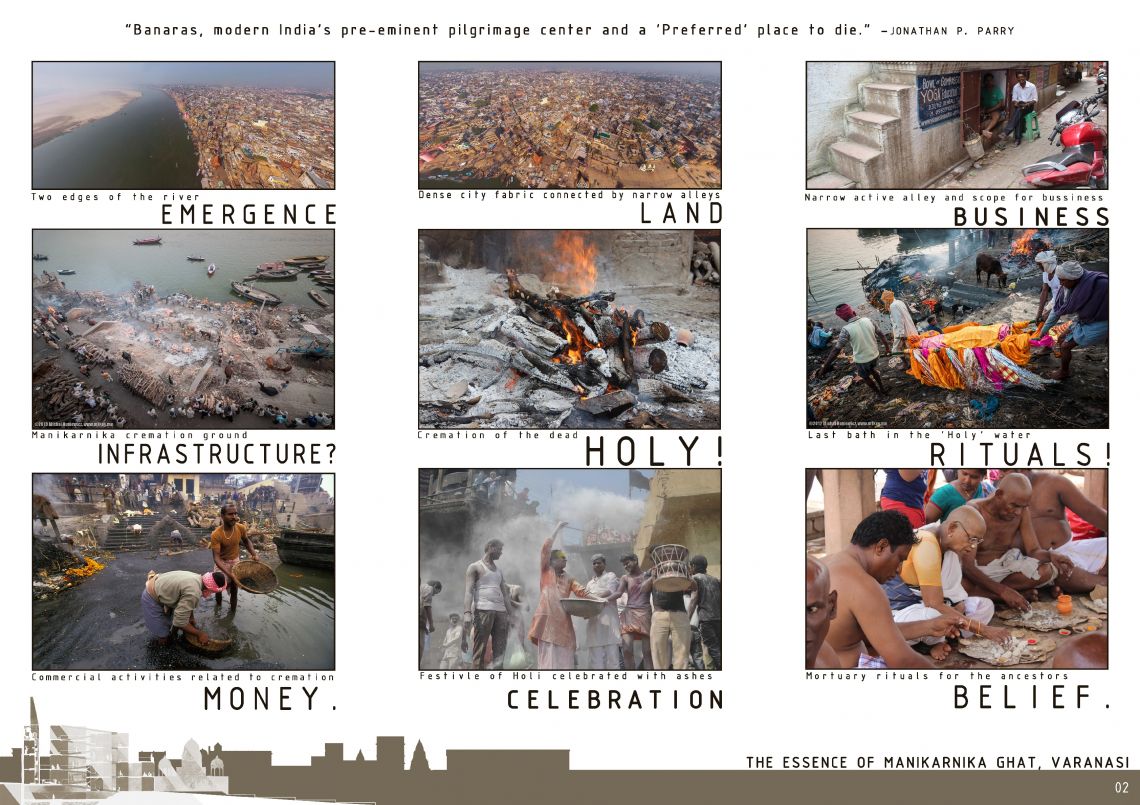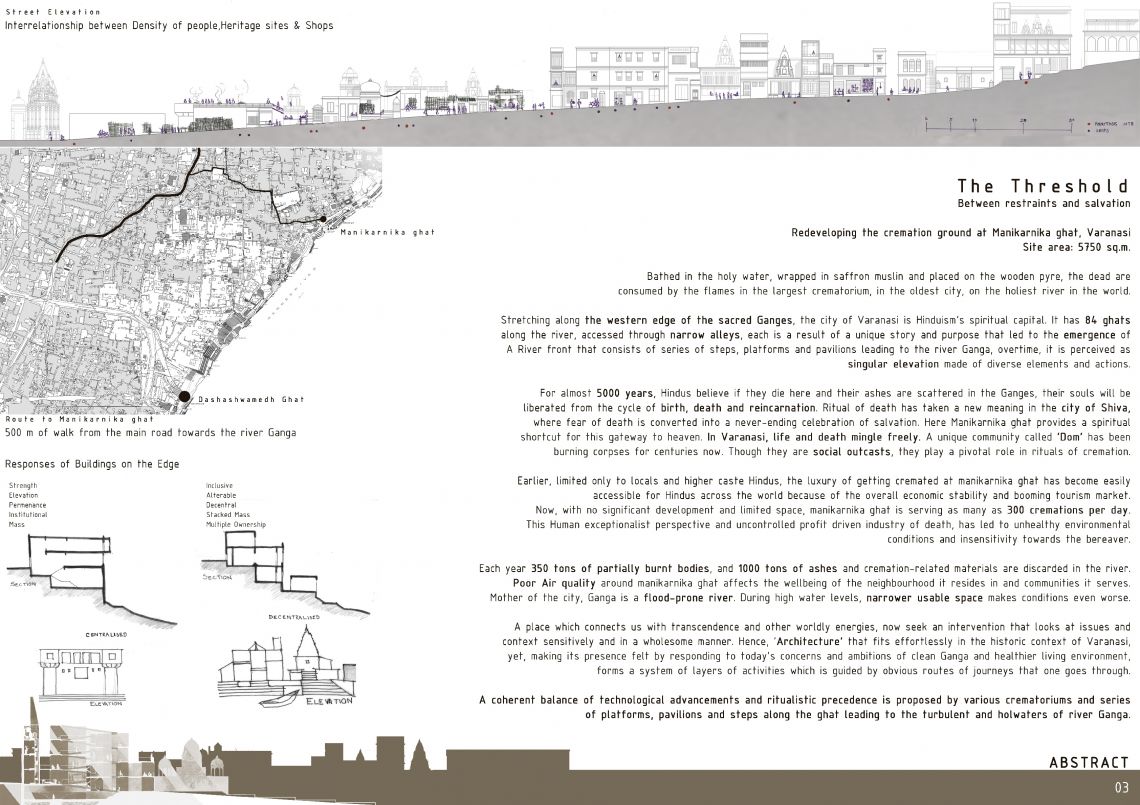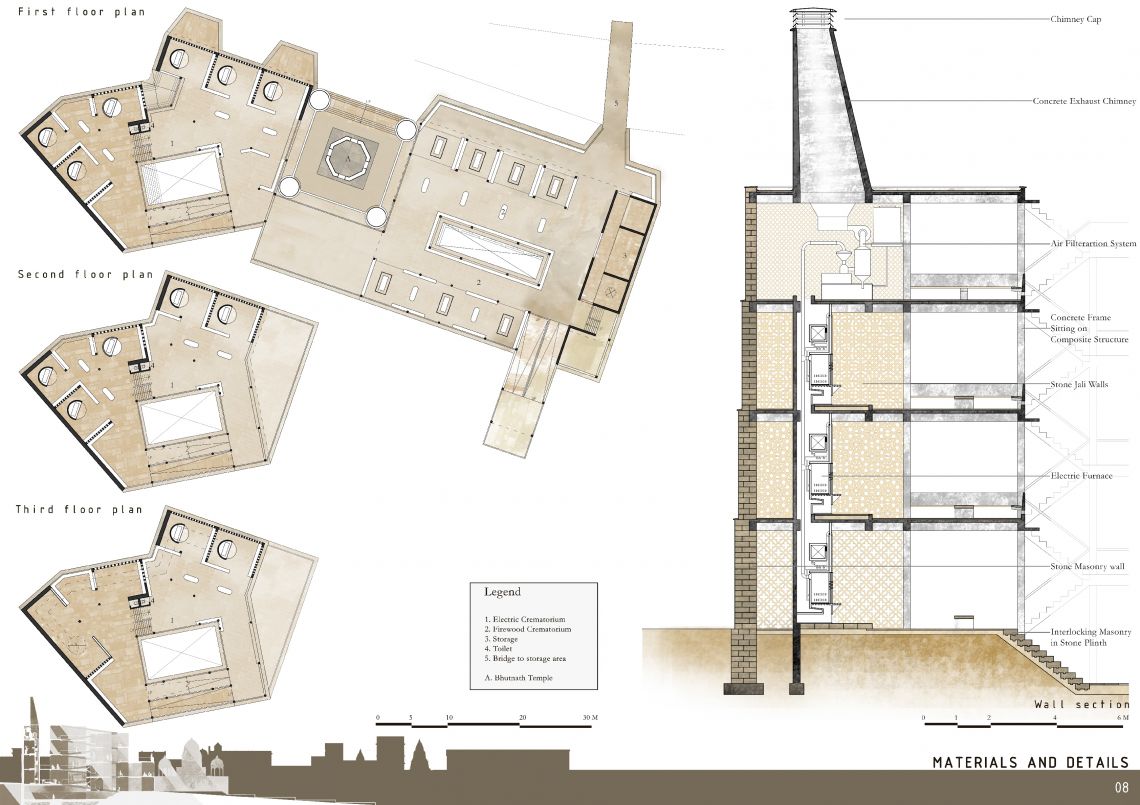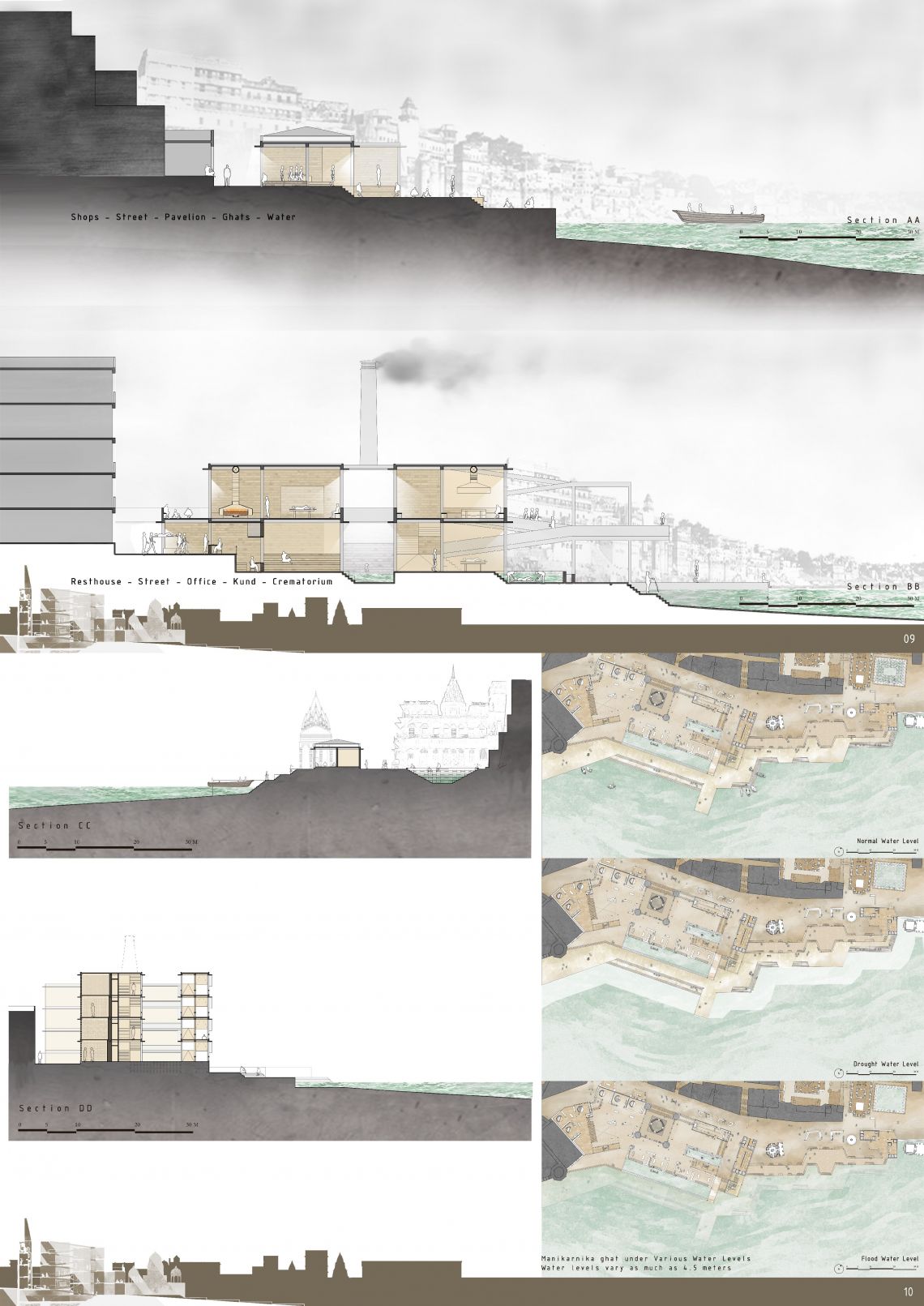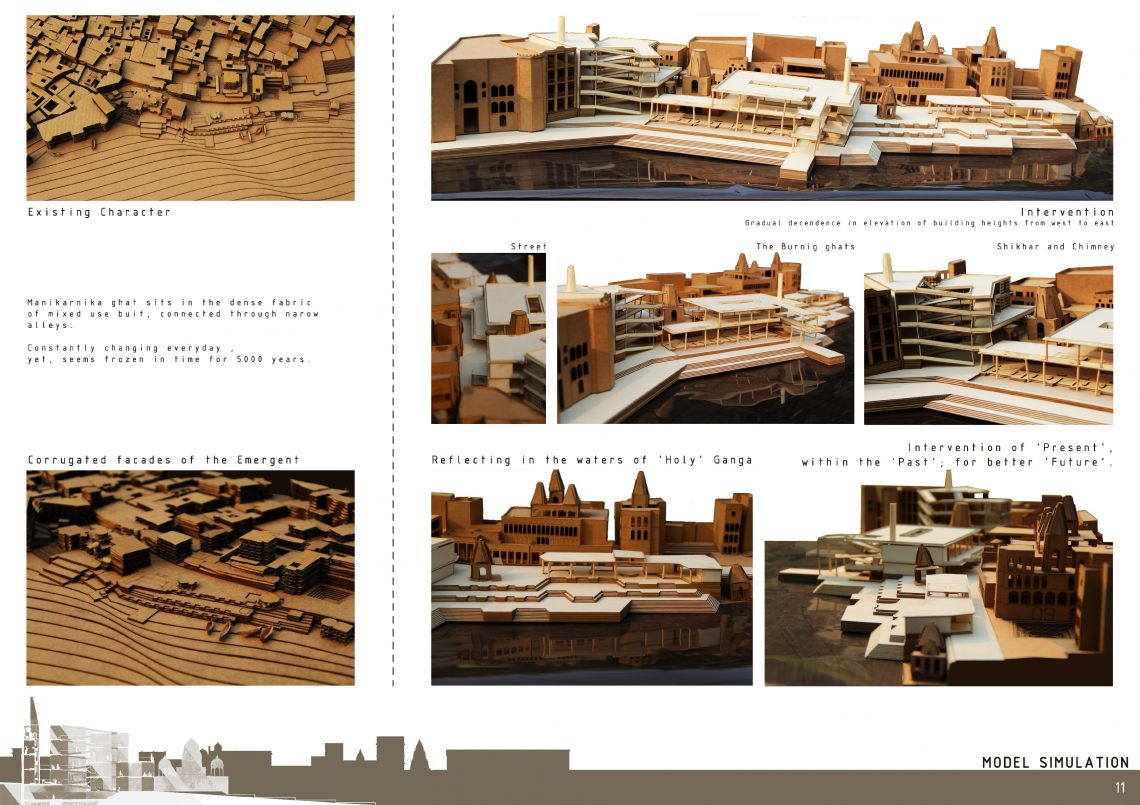Your browser is out-of-date!
For a richer surfing experience on our website, please update your browser. Update my browser now!
For a richer surfing experience on our website, please update your browser. Update my browser now!
The Threshold
Between restraints and salvation
Redeveloping the cremation ground at Manikarnika ghat, Varanasi
Site area: 5750 sq.m.
Bathed in the holy water, wrapped in saffron muslin and placed on the wooden pyre, the dead are consumed by the flames in the
largest crematorium, in the oldest city, on the holiest river in the world.
Stretching along the western edge of the sacred Ganges, the city of Varanasi is Hinduism's spiritual capital. It has 84 ghats
along the river, accessed through narrow alleys, each is a result of a unique story and purpose that led to the emergence of a
river front that consists of series of steps, platforms and pavilions leading to the river Ganga, overtime, it is perceived as
singular elevation made of diverse elements and actions.
For almost 5000 years, Hindus believe if they die here and their ashes are scattered in the Ganges, their souls will be liberated
from the cycle of birth, death and reincarnation. Ritual of death has taken a new meaning in the city of Shiva, where fear of
death is converted into a never-ending celebration of salvation. Here Manikarnika ghat provides a spiritual shortcut for this
gateway to heaven. In Varanasi, life and death mingle freely. A unique community called ‘Dom’ has been burning corpses for
centuries now. Though they are social outcasts, they play a pivotal role in rituals of cremation.
Earlier, limited only to locals and higher caste Hindus, the luxury of getting cremated at manikarnika ghat has become easily
accessible for Hindus across the world because of the overall economic stability and booming tourism market. Now, with no
apparent development and limited space and resources, manikarnika ghat is serving as many as 300 cremations per day.
This Human exceptionalist perspective and uncontrolled profit driven industry of death, has led to unhealthy environmental
conditions and insensitivity towards the bereaver.
Each year 350 tons of partially burnt bodies, and 1000 tons of ashes and cremation-related materials are discarded in the river.
Air quality around manikarnika ghat affects the wellbeing of the neighbourhood it resides in and communities it serves.
Mother of the city, Ganga is a flood-prone river. During high water levels, narrower usable space makes conditions even worse.
A place which connects us with transcendence and other worldly energies, now seek an intervention that looks at issues and
context sensitively and in a wholesome manner. Hence, ‘Architecture’ that fits effortlessly in the historic context of Varanasi,
yet, making its presence felt by responding to today's concerns and ambitions of clean Ganga and healthier living environment,
forms a system of layers of activities which is guided by obvious routes of journeys that one goes through.
A coherent balance of technological advancements and ritualistic precedence is proposed by various crematoriums and series
of platforms, pavilions and steps along the ghat leading to the turbulent and holy waters of river Ganga.
